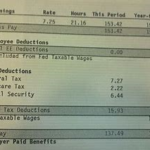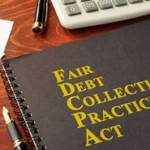This is the final article in the “Consumer Lawsuit” series. Part I covered what happens when the consumer is defendant (served with a lawsuit) and what to do. Part II covered two instances “when” the consumer should consider suing a creditor, collector, or credit reporting agency. This article will cover what to expect when the consumer is the plaintiff, or the party that files a lawsuit. I am going to emphasize again in Part III – very few people like lawsuits. They can be stressful, frustrating, and exhausting. But sometimes they are necessary to protect legal rights.
I want to start with one of the biggest obstacles for consumers who should consider a lawsuit- attorneys and fees. Attorneys are often seen as the bad guys in consumer disputes. The creditors often have teams of attorneys, and many collection agencies employ attorneys to collect on debts. This is why collection notices may originate from a law office. For many consumers who want to fight, the thought and costs associated with legal representation are a huge issue. However, these concerns are directly addressed within the consumer protection laws themselves to make sure consumers can get relief.
Consumers can be Awarded Costs and Attorney Fees Under Fee-Shifting Statutes from Violators
For cases brought by consumer under the Fair Debt Collection Practices Act (FDCPA) and the Fair Credit Reporting Act (FCRA), there are provisions for plaintiffs “who prevail” against the collector or credit reporting agency who violated the law. In addition to “actual” damages the consumer suffered by the violation, there are “statutory” damages, meaning money damages available to the consumer within the law just for the violation, and under “fee-shifting” provisions, the law provides the collector or credit reporting agency pay, “costs” and “reasonable attorney fees.” Rarely is the client out of pocket “up front” for these cases, and many attorneys evaluate these cases without a fee. Also, once a consumer is represented by an attorney, the collector cannot contact them directly, the collector must only contact the consumer through their attorney.
Procedures in a Lawsuit Itself
When a consumer decides to file a lawsuit, there are procedures that must be followed under our system of laws and justice. There is an order to things, and this order must be strictly followed. This is another part of the frustration and emotional toll many lawsuits can take on consumers. Lawsuits may seem overly complicated, slow moving, and the other side has rights to file motions as well. As I covered in Part I, every defendant has the right to receive notice of the lawsuit filed against them and has the right to respond.
If we describe the process in the most basic order of steps, and not all suits are straight lines, there are four to five steps that are common. The lawsuit will contain the original complaint, or pleading to the court, service to and the answer by the defendant, motions and “discovery” around evidence, conferences before a trial with settlement talks, and then a trial. Not all lawsuits make it to trial, in fact most are resolved much earlier in the process. Sometimes settlement talks can occur right after the answer is filed by the defendant and the evidence of consumer law violations is produced. This is because the consumer protection laws under the FDCPA and FCRA are “strict liability” meaning, if the violation occurs, the collector or credit reporting agency is liable. There is no need to prove that the agency had bad intent or malice toward the consumer. Because there is a strict liability component to the laws, many consumers receive relief from the courts when they enforce their legal rights and defend themselves against abusive and illegal tactics to collect debts or credit reporting errors that the agencies refuse to correct.
And that’s really about it for the basics of the consumer lawsuit. If you missed Part I or Part II, you may want to go back and read them. If you have questions or comments about this series, please let me know. I want to re-emphasize that if a consumer owes money, there is a right way to collect a debt within the law, and a wrong way that violates the law. If a credit reporting agency makes an error, and refuses to correct it, there can be serious consequences for the consumer, whether it is being denied a job, having a security clearance revoked, or increased insurance rates. When agencies violate the law, consumers have rights, and they need to enforce them.




 Lots of news floating around about how a new legislative proposal where the federal government would take
Lots of news floating around about how a new legislative proposal where the federal government would take 
 The National Consumer Law Center (NCLC) recently published a
The National Consumer Law Center (NCLC) recently published a 

 flickr.com
flickr.com